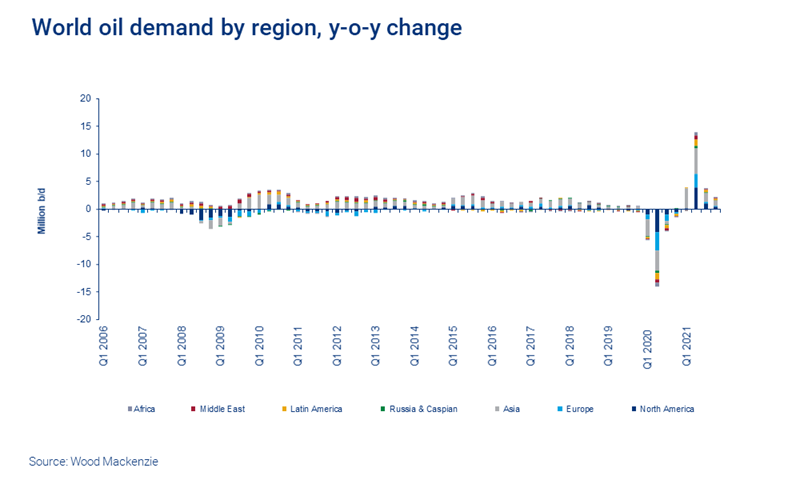How will refiners cope with lost oil demand?
Demand pressures, overcapacity and budget cuts mean the refining industry should brace for a challenging few years ahead
1 minute read
Alan Gelder
SVP Refining, Chemicals & Oil Markets

Alan Gelder
SVP Refining, Chemicals & Oil Markets
Alan is responsible for formulating our research outlook and cross-sector perspectives on the global downstream sector.
Latest articles by Alan
-
The Edge
Upstream’s mounting challenge to deliver future oil supply
-
Opinion
The impact of the Israel-Iran conflict escalation on the global energy market
-
Opinion
Oil and refining market implications of Israel’s strike on Iran
-
Opinion
What is the impact of US tariffs on oil and refining?
-
Opinion
Oil and refined products in 2025: a commodity trader’s guide
-
Opinion
Global refinery closure outlook to 2035
We are projecting a significant surplus of refining capacity over the next five years – only the strongest will survive and thrive. And this was even before the emergence of the coronavirus and its near-term downward impact on oil demand.
Coronavirus lockdown measures have hit the refining sector particularly hard. Even before the coronavirus took the bottom out of oil demand, overcapacity was a threat. But now, global gross refining margins have collapsed – as have crude runs. In combination, that means earnings have taken a significant knock.
As oil demand continues to recover, will downstream refining return to ‘normal’? And what might that version of ‘normal’ look like?
2020 a ‘lost year’ for oil demand growth
Across the second quarter of this year, oil demand has fallen by almost 14 million barrels per day. April was the worst month, with a loss of over 20 million barrels per day. But the good news is that things are now improving.
The recovery we began to see in May should accelerate through the rest of 2020 and the outlook for 2021 looks strong. However, given the scale of the loss in Q2 2020, it’s only at the end of 2021 that we will get back to 2019 demand levels.
Oil Majors react quickly to falling demand
Budget cuts have been swift and dramatic – overall budgets for 2020 are down by US$29bn. Both capital expenditure and operating costs have been cut to reflect the loss of earnings.
But the pressure on downstream has been less severe, with relatively modest capital expenditure cuts: when crude prices are weak, return on capital employed tends to fare better for downstream than upstream, but these are far from normal times.
Will there be winners and losers?
Large parts of the refining industry will make little or no money in 2020. But there are some relative winners in this crisis.
The more sophisticated refineries – those that have deep conversion sites – should do best. On the flip side, they will also suffer the biggest fall in earnings in comparison to our pre-pandemic forecast, but they should generate positive cash flow.
Within the downstream segment, petrochemicals projects are likely to take a bigger hit than refineries. Many projects are in the engineering or planning phase. And at that early stage of development, it’s easier to delay or defer the investment decision.
However, refiners must also contend with overcapacity – and the coronavirus crisis will only exacerbate that. The industry should brace for a challenging few years ahead.
Large parts of the refining industry will be suffering from weak margins and will need to adapt to ensure their survival. Refining will need to go back to its roots as a conversion industry – and that now needs to extend beyond crude oil.
Refiners need to adapt to survive – and thrive
Beyond crude oil, there are a host of opportunities for refiners to stay relevant in the long term.
Refiners that remain relevant should be large coastal sites and heavily integrated with petrochemicals to ensure they are competitive. Excellent logistics, integration with liquid biofuels and renewable power generation will give these facilities an edge. Investment at these sites will need to focus on the adoption of advanced, second-generation biofuels and the chemical recycling of plastics.
The coronavirus crisis could be the refining industries’ dress rehearsal for what happens when the energy transition takes a bite out of oil demand. Find out how refiners can ready themselves for the energy transition in Alan Gelder’s complimentary report. Fill in the form on this page.







